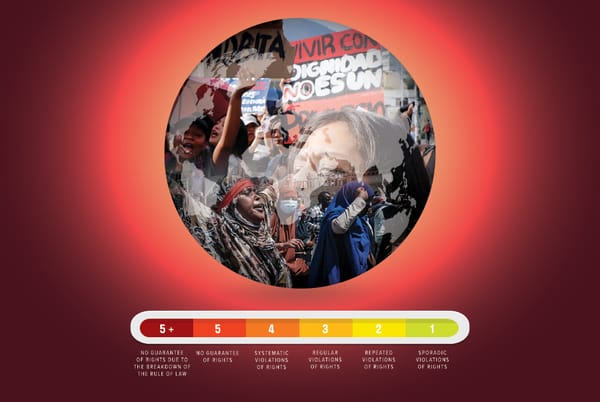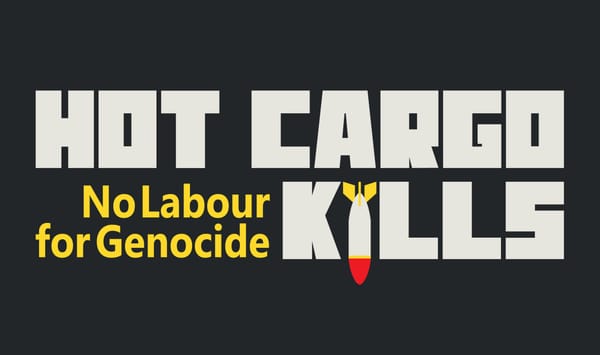
On November 9, the federal government finally tabled its promised anti-scab legislation. When passed, this new law will ban the use of replacement workers in federally regulated workplaces, fulfilling a key promise made to the federal NDP in the supply and confidence agreement.
The Liberals originally floated a limited ban on scabs in their last election platform. After opposing such a ban in previous years, 2021 saw the Trudeau government concede to the idea of outlawing replacement workers but only during employer-initiated lockouts. It took the supply and confidence agreement with the NDP — as well as concerted pressure from labour — for a full replacement work ban to come to fruition.
The NDP has long supported a federal ban on scabs and has introduced several bills of its own over the years, all of which were voted down and largely opposed by Liberals and Conservatives.
The new bill will also strictly limit employers’ use of non-union contractors hired before a work stoppage and impose fines of up to $100,000 per day for employers found in contravention of the law.
After committing to an anti-scab law by the end of 2023, the government began consultations with labour, employers and Indigenous organizations over a year ago. (Full disclosure: I participated in these consultations.) Ahead of Thursday’s legislation, the government also released a lengthy “what we heard” report, summarizing the outcomes of the consultations. Unsurprisingly, labour and business “strongly disagreed” on the question of a ban on scabs.
Unions across the country overwhelmingly welcomed the new legislation. The Canadian Labour Congress celebrated the bill, while noting that “scab workers [undermine] fair and transparent collective bargaining, by tipping the balance of power to the employer.” Unifor ‘lauded’ Minister of Labour Seamus O’Regan, who introduced the bill, for fulfilling the Liberals’ promise. The Public Service Alliance of Canada also welcomed the new law, noting that scabs were recently used against striking housing authority workers in Iqaluit, NT.
At the same time, an unnamed labour source told the CBC the legislation could have been stronger. In part, weakness stems from the decision of the government to open the “maintenance of activities” provisions of the Canada Labour Code for review at the same time as a scab ban was considered. So-called “maintenance of activities” allow employers to keep portions of their operations running during work stoppages if shuttering them would pose a risk to health or public safety. Labour believed this could provide employers an opportunity to pry open the types of “activities” considered essential during a strike.
Thus far, it seems maintenance of activities rules haven’t been revised appreciably.
True to form, the business lobby is out in force against the scab ban, as they have been throughout the consultation process. In an especially uninformed statement, the Canadian Federation of Independent Business (CFIB) called the bill “a threat to small business and the economy.” The federal jurisdiction is overwhelmingly made up of large employers. As of 2018, around 82 per cent of federally regulated workers were employed by firms with 100 or more employees. The share is likely higher now and is certainly larger when only union members are counted.
The CFIB also claimed the bill would lengthen strikes, again contrary to evidence. By preventing employers from simply replacing striking union members and compelling them to bargain more seriously, a replacement worker ban will likely shorten strike duration.
The Canadian Chamber of Commerce also strongly opposed the new ban on scabs. In a statement, the organization claimed the federal government has “put its thumb firmly on the scale in favour” of labour, placing “fragile supply chains” and the economy in jeopardy.
Currently, only Quebec and British Columbia ban the use of replacement workers. While there are some small differences between legislation in each of these jurisdictions, the basic idea is that employers are barred from hiring new workers and having them perform the work of bargaining unit members during a strike or lockout. Quebec has banned scabs since 1977, while B.C. introduced their law in 1993. In neither case did the sky fall, as the business lobby is presently predicting. But the balance of power during strikes did shift somewhat toward unions. That’s the point.
In all other Canadian jurisdictions, it’s unlawful for an employer to permanently replace a striking worker, but they are permitted to hire scabs temporarily during work stoppages. For example, the Canada Labour Code currently allows employers to hire replacements so long as the intention is not to “undermine the representational capacity” of the union — in other words, so long as the intention is not to bust the union but instead to achieve a “legitimate bargaining objective” (“legitimate” being a rather subjective word here). Prior to 1999, there was no federal limit on the use of scabs.
In practice, it is very difficult for a union to demonstrate that an employer brought in scabs to “undermine its representational capacity” rather than to exert pressure during bargaining. Consequently, unions rarely file complaints about the use of replacement workers and have instead for years been fighting for a complete ban on scabs.
This federal ban on scabs will be a substantial labour victory, but it will also be limited by the relatively small number of workers covered by the legislation. Roughly 5 per cent of employees in Canada work in federally regulated industries, such as air, rail and interprovincial road transportation, banking and telecommunications, and some mining and extraction.
On the other hand, the positive impacts of anti-scab legislation will be disproportionately felt by workers in federal industries. For example, more than a third (34 per cent) of workers in the federally regulated private sector are union members, compared to just 15 per cent of private sector workers across the provinces. So while a relatively small percentage of employees work in federally regulated industries, they are far more likely to be union members than their provincially regulated counterparts.
Additionally, many of these union members work in strategically significant industries. A primary criteria that brings an industry under federal jurisdiction is inter-provincial or international travel or commerce. Consequently, a ban on scabs will be very important to unions representing workers in transportation and logistics.
We need only think of recent strikes at the B.C. ports or the St. Lawrence Seaway. While neither employer used scabs in these disputes, the legal option nevertheless has an influence on the course of negotiations. The federal ban also increases fairness between workers in the provinces that currently have a scab ban. At present, union members at provincially regulated companies in these two provinces enjoy anti-scab protection, while workers at federally regulated firms who happen to work in either province don’t.
Although Statistics Canada doesn’t track the use of replacement workers, there is anecdotal evidence from various sources that employers rely on scab labour frequently. In a study from 2021, Unifor reported that employers used scabs in 9.2 per cent of the union’s work stoppages. Unifor also found that scabs significantly prolonged strikes. According to their data, the average work stoppage lasted about 43 days when no scabs were used, but around 265 days when the employer brought in scabs.
Unifor’s figures on the frequency with which employers use scabs were considerably lower than those disclosed by the Labour Program of Employment and Social Development Canada, the federal department that oversaw the replacement worker consultation process. In a discussion paper released ahead of meetings with labour and business representatives, the government reported that scabs were involved in 42 per cent of work stoppages in the federal jurisdiction, a staggering figure.
As an example, Rogers is currently employing scabs to perform the work of locked-out United Steelworkers technicians in B.C. Under the new replacement worker ban, this would be unlawful.
Nevertheless, union members at Rogers and in all other federally regulated workplaces will have to wait some time for the law to take effect. Bill C-58 will only come into force 18 months after the legislation receives royal assent, ostensibly to give employers “time to adjust.” Labour representatives have called this waiting period entirely unnecessary and argued that the law should come into force immediately.
Despite this shortcoming, make no mistake, achieving a federal ban on scabs is a major achievement. It’s time to ban scabs in every Canadian province.
CORRECTION: This article has been updated to correct the union density percentage for the federal private sector. The Maple regrets this error.
Recent Class Struggle Issues
- November 6 | Striking Seaway Workers Showed The Power Of ‘Essential’ Labour
- October 30 | Canadian Labour Is Lining Up In Support Of Palestinians
- October 23 | Fred Hahn Deserves Our Full Support Against Pro-Israeli Smears
- October 16 | Who Did It Better, United Auto Workers Or Unifor?







